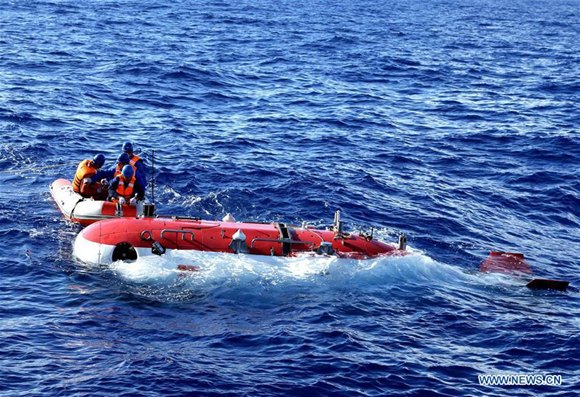On Tuesday China celebrated its first science and technology day, which means it has only been one year since the country declared its intention of becoming a leading power in S&T by the middle of the century.
Things have moved pretty swiftly since.
Jiaolong, China's manned submersible, went quite literally to the bottom of the ocean this week, diving three times into the Mariana Trench and reaching a depth of 6,544 meters on May 27. Scientists collected samples of seawater, rock and marine life, including sea cucumbers, sponges and starfish. The geological samples will help them understand how the trench was formed.

WHAT GOES DOWN, MUST GO UP
In pursuit of the kind of quantum scientific leaps China needs, space is another frontier to be conquered.
In southwest China, the Five-hundred-meter Aperture Spherical Telescope (FAST), the world's largest radio telescope, began scanning the skies in September. Its mission is to help us understand the origin and structure of the universe, and perhaps bring the search for extraterrestrial life closer to what would be an astonishing conclusion.
Meanwhile, out in actual space itself, the Shenzhou-11 spacecraft, launched in October last year, carried two astronauts to space lab Tiangong-2, where they remained for 30 days.
In April this year, the Tianzhou-1 cargo spacecraft docked with Tiangong-2, refueling and resupplying the orbiting lab.
In January experiments began with a quantum communication satellite launched last August and preliminary data is promising.
Quantum Experiments at Space Scale (QUESS) will explore "hack-proof" quantum communications by transmitting unhackable keys from space.
In aerospace, China's first large passenger aircraft, the C919, made its maiden flight in May in Shanghai. The launch of the first Chinese-built aircraft carrier in April also raised the world's eyebrows.
QUANTUM LEAP
China needs science and technology more than ever and the country's scientists should occupy the world's S&T high ground, said Bai Chunli, president of the Chinese Academy of Sciences (CAS).
Quantum computers are the Holy Grail of IT and will soon leave conventional computers eating their dust. The world's first quantum computer has been created in China. A quantum computer with 50 quantum bits will be faster than today's fastest supercomputer, Sunway TaihuLight, which is also made by China.
While development of science and technology promises a better future, it also means saving lives of millions of people today.
In September last year, Nobel laureate Tu Youyou's team announced they had made new progress in research into antimalarial drug artemisinin. The finding may provide a new treatment of malaria. Tu won the Nobel Prize for Physiology or Medicine in 2015 for the discovery of artemisinin, the first Chinese national to win a Nobel prize in science.


















































